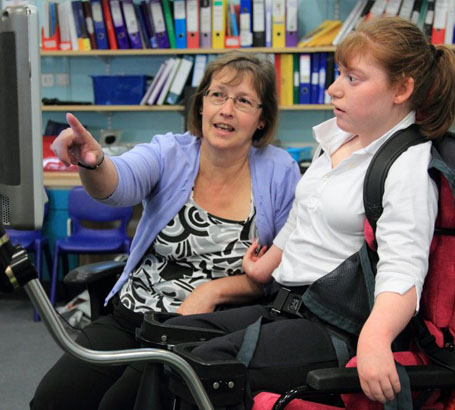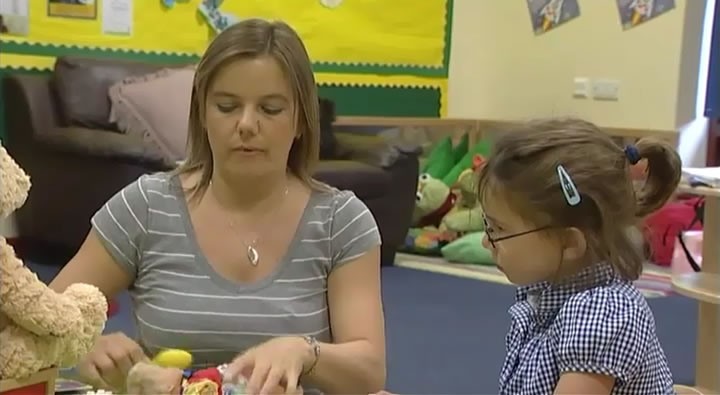![A girl smiles as a teacher talks to her]]](img/m08p070b/aMilestone_0079.jpg)
Here we will focus upon how various observational methods may be used to help teachers form judgements about the use of
language by pupils and the fact that it is important to be aware of the limitations of these approaches for sampling use of
language in the classroom.
Read the following article and consider the main issues raised in it.

The language used by pupils, even young children, can be highly complex. Teachers are not specialists in language and
communication development. It takes much practice and training to make reliable and accurate transcriptions of pupils’
utterances.
A variety of different analyses of samples of utterances are possible, ranging from simple word counts to complex profiling
of grammatical usage, vocabulary and/or phonology. Teachers should always seek specialist advice from a speech and language
therapist if one is available.
What is your experience of working with such specialists? How has their input and expertise informed your approach?
It simply is not a realistic aim to use observational methods alone to arrive at an understanding of pupils’ language
abilities. Observations can be useful for generating hypotheses about a pupil’s language abilities but they may require
further testing. Observations help teachers to check on the generalisation to the ordinary classroom environment of language
skills that have been learned in more structured teaching settings.
Some aspects of a pupil’s use of language are more likely to be observed at home. Therefore, parental cooperation in
getting together realistic language samples is going to be helpful in gaining a fuller picture.
Observation records should show the context for what pupils say and do. For instance, does the pupil say more in response to questions or to statements from the teacher? Does the pupil say more during specific activities? Is the teacher more likely to get responses in activities involving use of actual items or will the pupil respond well to discussion about pictures? Does the pupil tend to say more when interacting with a particular adult or pupils? And so on.
When planning observations, have a particular focus. For instance, has the pupil started to use verbs? Also, what constitutes
a sufficient sample of utterances for analysis? It may take a minimum sample of 50 to 100 sentences or words to generate
a reasonable profile of a pupil’s overall language abilities and needs.
Some researchers recommend obtaining a minimum of 30 minutes of taped interactions between a child and the therapist of which 15 minutes should be in an unstructured free play setting and 15 minutes of dialogue on some aspect of the child’s experience. In the case of a quieter child, it may be necessary to continue to sample until a pattern emerges.

It is important to remember that observation alone cannot give us a comprehensive picture of the pupil’s knowledge
and skills. Observations within natural contexts and the use of various assessment tools are equally important in holistic
assessment.
One particular assessment tool is provided by the Derbyshire Language Scheme. Read about it here:
In this video a teaching assistant uses simple, objective tests in the context of the Derbyshire Language Scheme to assess a child’s understanding of simple sentences. What is the teaching assistant assessing? What do you observe about the child’s responses and about the adult’s use of strategies and techniques?
